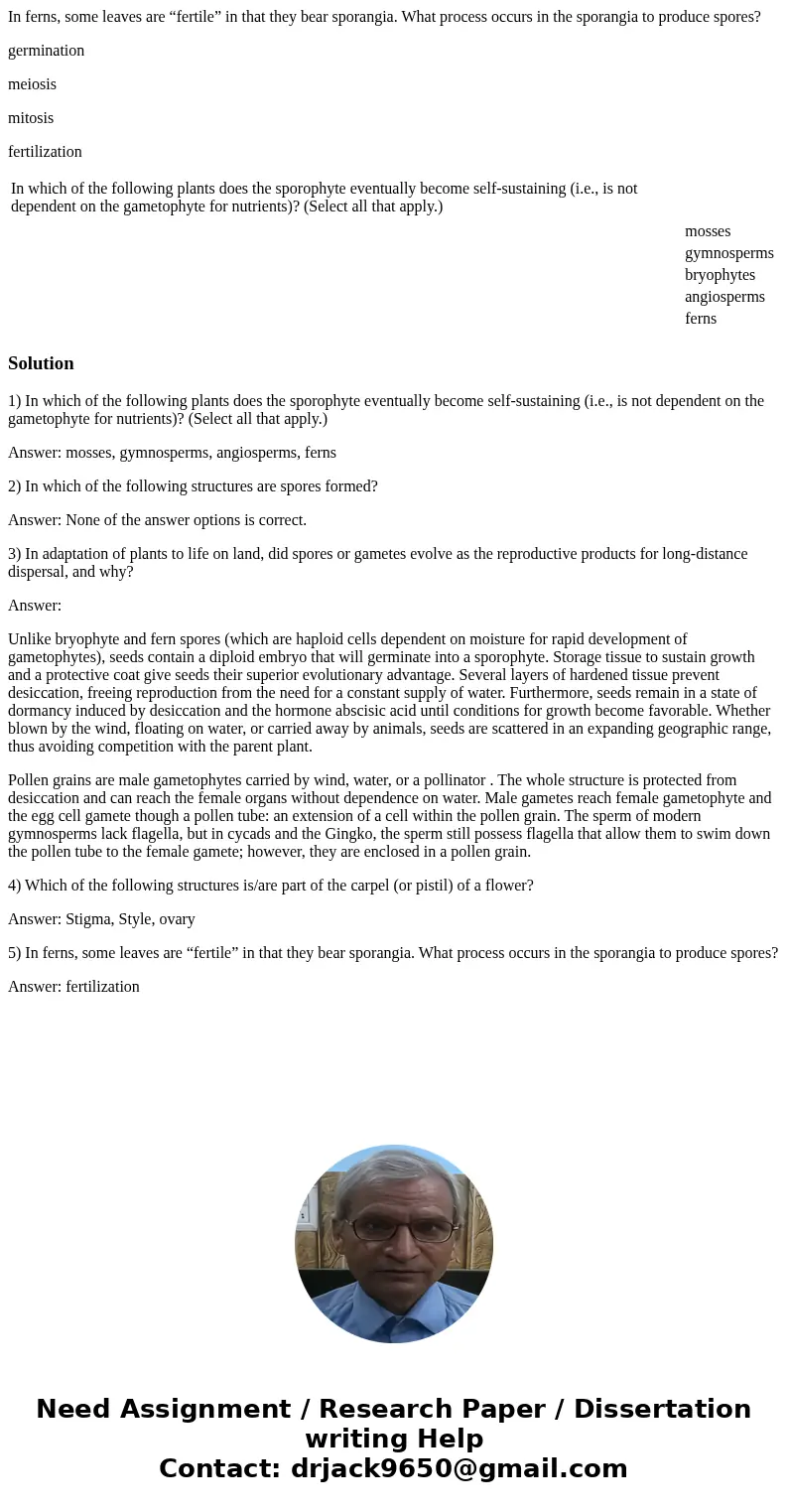In ferns some leaves are fertile in that they bear sporangia
In ferns, some leaves are “fertile” in that they bear sporangia. What process occurs in the sporangia to produce spores?
germination
meiosis
mitosis
fertilization
| In which of the following plants does the sporophyte eventually become self-sustaining (i.e., is not dependent on the gametophyte for nutrients)? (Select all that apply.) | |||||||||||||||||
|
Solution
1) In which of the following plants does the sporophyte eventually become self-sustaining (i.e., is not dependent on the gametophyte for nutrients)? (Select all that apply.)
Answer: mosses, gymnosperms, angiosperms, ferns
2) In which of the following structures are spores formed?
Answer: None of the answer options is correct.
3) In adaptation of plants to life on land, did spores or gametes evolve as the reproductive products for long-distance dispersal, and why?
Answer:
Unlike bryophyte and fern spores (which are haploid cells dependent on moisture for rapid development of gametophytes), seeds contain a diploid embryo that will germinate into a sporophyte. Storage tissue to sustain growth and a protective coat give seeds their superior evolutionary advantage. Several layers of hardened tissue prevent desiccation, freeing reproduction from the need for a constant supply of water. Furthermore, seeds remain in a state of dormancy induced by desiccation and the hormone abscisic acid until conditions for growth become favorable. Whether blown by the wind, floating on water, or carried away by animals, seeds are scattered in an expanding geographic range, thus avoiding competition with the parent plant.
Pollen grains are male gametophytes carried by wind, water, or a pollinator . The whole structure is protected from desiccation and can reach the female organs without dependence on water. Male gametes reach female gametophyte and the egg cell gamete though a pollen tube: an extension of a cell within the pollen grain. The sperm of modern gymnosperms lack flagella, but in cycads and the Gingko, the sperm still possess flagella that allow them to swim down the pollen tube to the female gamete; however, they are enclosed in a pollen grain.
4) Which of the following structures is/are part of the carpel (or pistil) of a flower?
Answer: Stigma, Style, ovary
5) In ferns, some leaves are “fertile” in that they bear sporangia. What process occurs in the sporangia to produce spores?
Answer: fertilization

 Homework Sourse
Homework Sourse